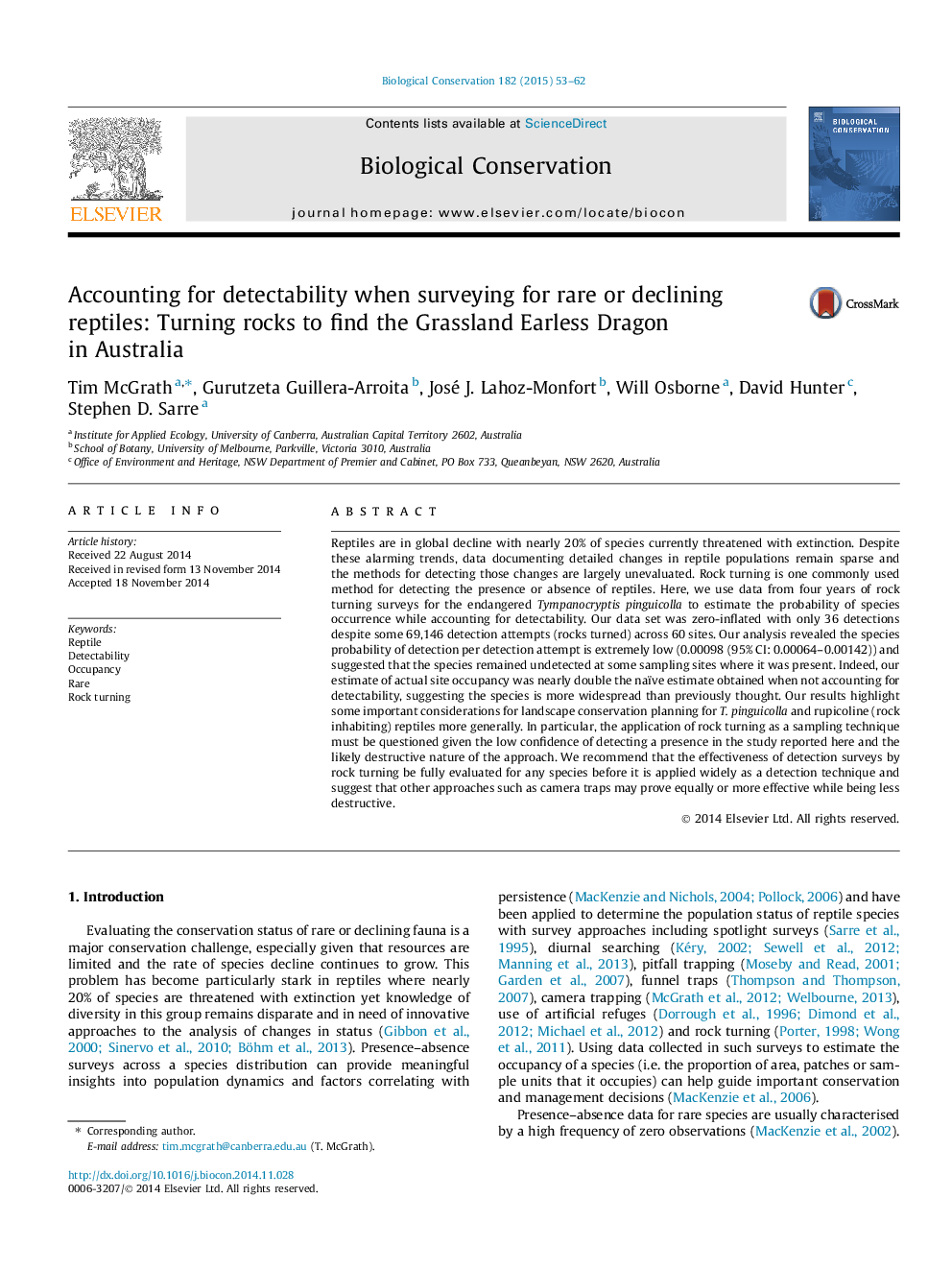| کد مقاله | کد نشریه | سال انتشار | مقاله انگلیسی | نسخه تمام متن |
|---|---|---|---|---|
| 6299291 | 1617919 | 2015 | 10 صفحه PDF | دانلود رایگان |
عنوان انگلیسی مقاله ISI
Accounting for detectability when surveying for rare or declining reptiles: Turning rocks to find the Grassland Earless Dragon in Australia
ترجمه فارسی عنوان
حسابداری برای تشخیص زمانی که در نظر سنجی برای خزندگان نادر و یا کاهش می یابد: تبدیل سنگ ها برای پیدا کردن اژدهای زودرس گیاهان در استرالیا
دانلود مقاله + سفارش ترجمه
دانلود مقاله ISI انگلیسی
رایگان برای ایرانیان
کلمات کلیدی
خزنده تشخیص تصرف، نادر، تبدیل سنگ،
موضوعات مرتبط
علوم زیستی و بیوفناوری
علوم کشاورزی و بیولوژیک
بوم شناسی، تکامل، رفتار و سامانه شناسی
چکیده انگلیسی
Reptiles are in global decline with nearly 20% of species currently threatened with extinction. Despite these alarming trends, data documenting detailed changes in reptile populations remain sparse and the methods for detecting those changes are largely unevaluated. Rock turning is one commonly used method for detecting the presence or absence of reptiles. Here, we use data from four years of rock turning surveys for the endangered Tympanocryptis pinguicolla to estimate the probability of species occurrence while accounting for detectability. Our data set was zero-inflated with only 36 detections despite some 69,146 detection attempts (rocks turned) across 60 sites. Our analysis revealed the species probability of detection per detection attempt is extremely low (0.00098 (95% CI: 0.00064-0.00142)) and suggested that the species remained undetected at some sampling sites where it was present. Indeed, our estimate of actual site occupancy was nearly double the naïve estimate obtained when not accounting for detectability, suggesting the species is more widespread than previously thought. Our results highlight some important considerations for landscape conservation planning for T. pinguicolla and rupicoline (rock inhabiting) reptiles more generally. In particular, the application of rock turning as a sampling technique must be questioned given the low confidence of detecting a presence in the study reported here and the likely destructive nature of the approach. We recommend that the effectiveness of detection surveys by rock turning be fully evaluated for any species before it is applied widely as a detection technique and suggest that other approaches such as camera traps may prove equally or more effective while being less destructive.
ناشر
Database: Elsevier - ScienceDirect (ساینس دایرکت)
Journal: Biological Conservation - Volume 182, February 2015, Pages 53-62
Journal: Biological Conservation - Volume 182, February 2015, Pages 53-62
نویسندگان
Tim McGrath, Gurutzeta Guillera-Arroita, José J. Lahoz-Monfort, Will Osborne, David Hunter, Stephen D. Sarre,
